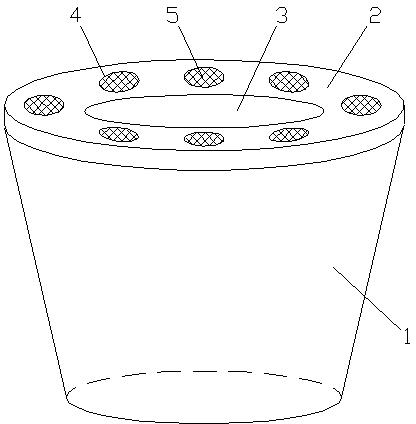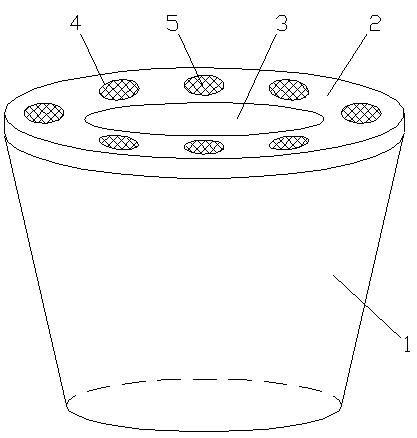Insect breeding bottom and breeding method of gynaikothrips ficorum
A bottle body and cap technology, applied in the field of insect breeding and insect ecology, can solve the problems of serious generation overlap, easy escape, and difficult capture, and achieve the effects of neat development, stable time and age, and high eclosion rate
- Summary
- Abstract
- Description
- Claims
- Application Information
AI Technical Summary
Problems solved by technology
Method used
Image
Examples
example example 1
[0029] Example 1: Batch rearing of Thrips sylvestris
[0030] (1) Exploration of feeding conditions
[0031] 1. Selection of moisturizing medium
[0032] experiment material: Special insect bottle, absorbent cotton, sponge, flower mud, filter paper, leaves of Ficus weeping leaves, clear water, adult thrips in Ficus tube.
[0033] experiment method: The experiment consisted of 3 groups with 3 repetitions. For each group of treatments, put sponges, absorbent cotton, and flower mud corresponding to the size of the bottom of the bottle at the bottom of the insect rearing bottle, with a thickness of 5mm. For the third leaf at the top of the new shoot that year, clean the leaf with a hook brush, and then wrap the petiole with cotton balls after absorbing water, and put the leaf horizontally into the insect bottle without touching the bottle wall and the leaf surface. Upward; each bottle was inoculated with 10 adult thrips figs with a hook-line brush, the ratio of male to ...
example 2
[0065] 2. Example 2: Real-time observation of the banyan tube thrips
[0066] During the batch breeding process of Thrips sylvestris, the main morphological characteristics and developmental history of each stage of Thrips sylvestris were observed through the 3 times magnifying glass in the center of the bottle cap. The comprehensive results are as follows:
[0067] (1) Morphological characteristics of each age
[0068] egg: Oval or kidney-shaped, most of them are produced in leaf galls, and a pair of red eyespots appear before hatching.
[0069] 1st instar nymph: When first hatched, it is colorless and transparent, with a large proportion of head and chest, and no obvious segmentation. After feeding and peeling, the antennae become slender, and the action is more lively.
[0070] 2nd instar nymph:The body is yellow, the proportion of head and chest becomes smaller, the segments are obvious, there are no exogenous wing buds, and the action is lively.
[0071] 3rd...
PUM
 Login to View More
Login to View More Abstract
Description
Claims
Application Information
 Login to View More
Login to View More - R&D
- Intellectual Property
- Life Sciences
- Materials
- Tech Scout
- Unparalleled Data Quality
- Higher Quality Content
- 60% Fewer Hallucinations
Browse by: Latest US Patents, China's latest patents, Technical Efficacy Thesaurus, Application Domain, Technology Topic, Popular Technical Reports.
© 2025 PatSnap. All rights reserved.Legal|Privacy policy|Modern Slavery Act Transparency Statement|Sitemap|About US| Contact US: help@patsnap.com



